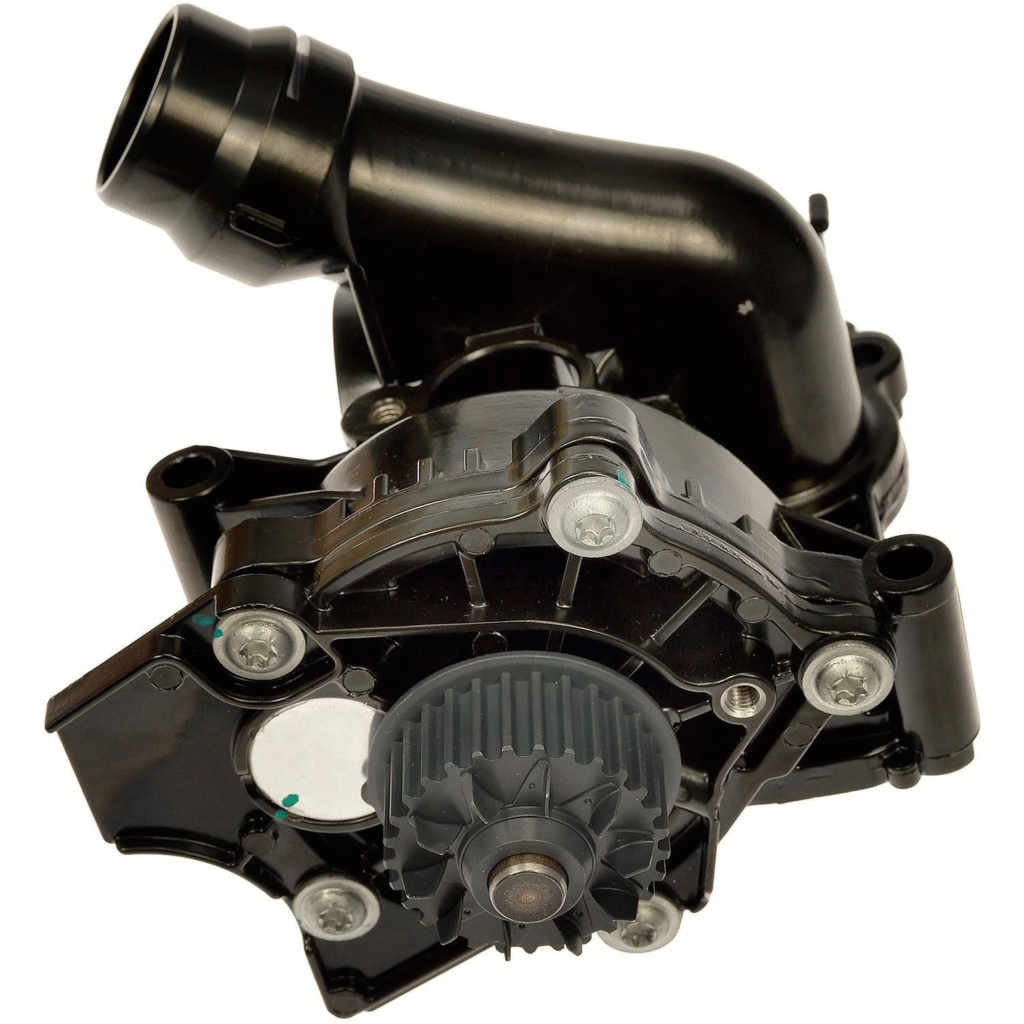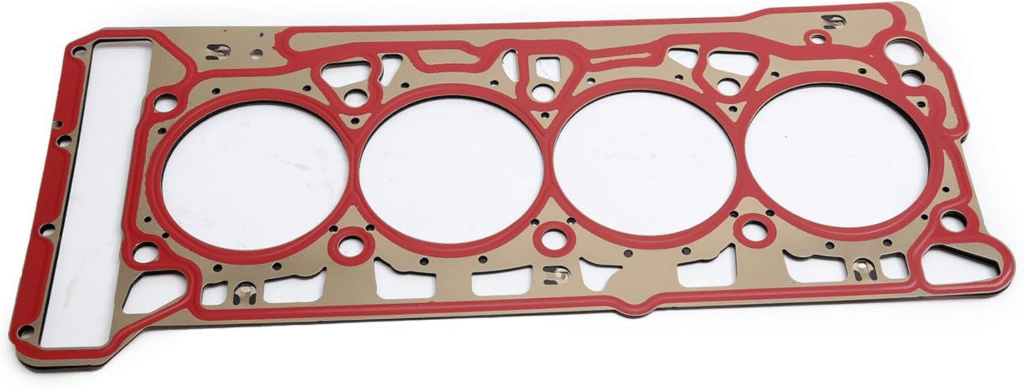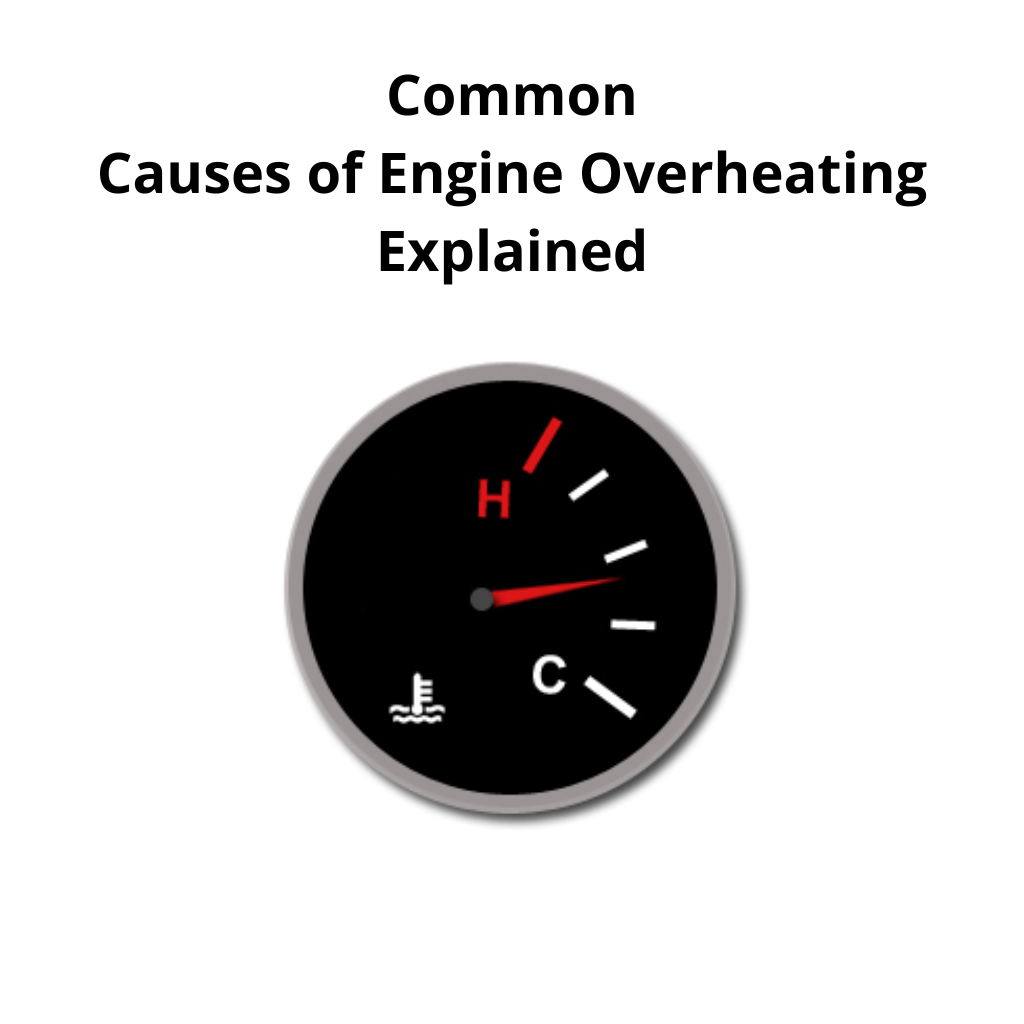Why Overheating Is a Serious Problem
An overheating engine is one of the most alarming issues any driver can face. When the temperature gauge climbs into the red, it’s not just an inconvenience – it’s a warning that your engine is running dangerously hot.
Ignoring it, even for a few minutes, can lead to warped cylinder heads, blown head gaskets, or even total engine failure.
In this guide, we’ll break down the most common engine overheating causes, how to recognize the signs, and what you can do to prevent long-term damage.
How the Cooling System Works
Before identifying what goes wrong, it helps to understand the cooling system’s purpose. Your car’s cooling system regulates engine temperature by circulating coolant (a mix of water and antifreeze) through the engine block and radiator.

Key components include:
- Radiator – dissipates heat into the air
- Water pump – circulates coolant through the engine
- Thermostat – controls coolant flow based on temperature
- Radiator fan – helps draw cool air when the car isn’t moving
- Coolant reservoir – stores extra fluid and maintains system pressure
If any part fails, the system can’t remove heat effectively, leading to overheating.
The Most Common Causes of Engine Overheating
1. Low Coolant Level

Low coolant is the number one cause of engine overheating. Coolant absorbs heat from the engine and transfers it to the radiator.
If there’s not enough fluid, heat builds up quickly. Low levels often result from:
- Leaks in hoses, radiator, or water pump
- Cracked expansion tank
- Loose or worn hose clamps
Tip: Always check the coolant when the engine is cool. The level should be between the “MIN” and “MAX” marks on the reservoir.
2. Faulty Thermostat

The thermostat regulates when coolant flows through the engine. When it gets stuck closed, coolant can’t circulate, causing the temperature to rise rapidly.
You may notice:
- Temperature gauge spikes within minutes of starting
- No warm air from the cabin heater
- Coolant boiling in the reservoir
Replacing a stuck thermostat is an inexpensive but crucial repair.
3. Broken Water Pump

The water pump is the heart of the cooling system, pushing coolant through the engine. When it fails – due to bearing wear, leaks, or a broken impeller – the coolant flow stops.
Symptoms of a failing water pump include:
- Coolant dripping from the front of the engine
- Grinding or whining noise from the pump area
- Steam or overheating at highway speeds
A worn pump must be replaced immediately, as driving with it can lead to catastrophic engine damage.
4. Radiator Problems

Radiators can clog internally with rust or sludge, or externally with dirt and debris that block airflow.
If coolant can’t flow or cool properly, heat remains trapped inside the engine.
Signs of a bad radiator:
- Discolored or sludgy coolant
- Visible corrosion or leaks on radiator fins
- Overheating in traffic or on hot days
Flushing the cooling system every few years helps prevent buildup.
5. Cooling Fan Failure

At low speeds or when idling, your car relies on an electric fan to pull air through the radiator.
If the fan doesn’t activate due to a blown fuse, bad relay, or failed temperature sensor, the engine overheats quickly.
You can test the fan by turning on the air conditioning—most fans should kick in automatically. If not, a mechanic can check for electrical issues.
6. Head Gasket Leak

A blown head gasket can cause coolant to leak into the combustion chambers or oil passages. This not only leads to overheating but also serious engine damage.
Common warning signs:
- White smoke from the exhaust
- Milky residue under the oil cap
- Coolant loss with no visible leaks
- Bubbles in the coolant reservoir
This is a major repair that requires professional service.
7. Drive Belt Issues

The serpentine or accessory belt drives the water pump in many vehicles. If it’s loose or broken, coolant circulation stops entirely.
Inspect belts regularly for cracks or fraying, especially in older vehicles or those with high mileage.
What to Do If Your Engine Overheats
If your temperature gauge spikes or you see steam from under the hood:
- Pull over safely and turn off the engine.
- Turn off A/C and switch the heater to max heat — this helps draw heat away from the engine.
- Wait at least 15–30 minutes before opening the hood.
- Check coolant levels only after the engine cools. Never open the radiator cap on a hot engine.
- Add coolant or water (temporary fix only) if the level is low.
- Call roadside assistance if the engine continues to overheat or leaks are visible.
Driving with an overheated engine can warp the cylinder head or seize the engine completely.
Preventing Future Overheating
Prevention starts with regular maintenance. Follow these best practices:
- Inspect coolant levels monthly.
- Replace coolant every 2–5 years depending on the type (check manual).
- Examine belts and hoses for cracks, leaks, or softness.
- Check the radiator fan function periodically.
- Clean the radiator fins to maintain airflow.
If your vehicle often overheats in traffic, consider professional diagnostics to check for restricted flow, faulty sensors, or electrical issues.
Keep Your Engine Cool, Keep It Healthy
An overheating engine is always a sign that something isn’t right. Whether it’s a minor leak or a major failure, catching it early can save thousands in repair costs.
By keeping an eye on your coolant level, maintaining your radiator, and replacing worn components promptly, you can ensure your engine stays at the right temperature for years of reliable driving.
